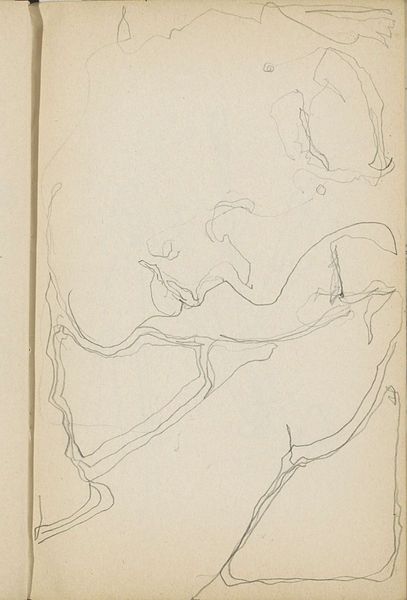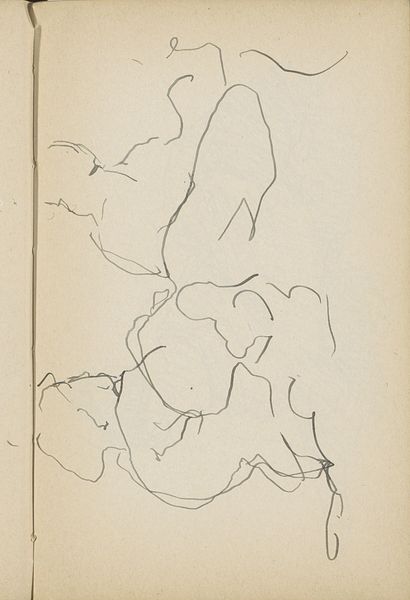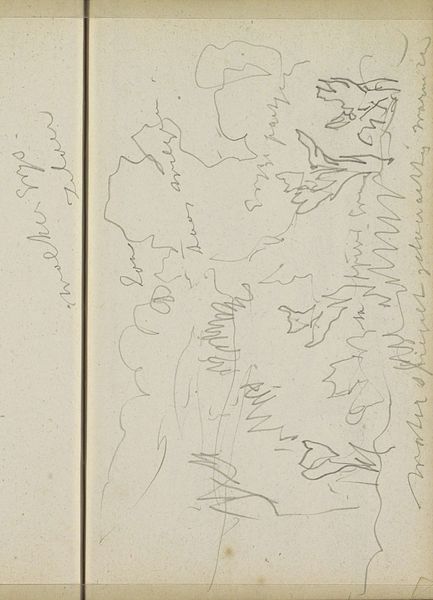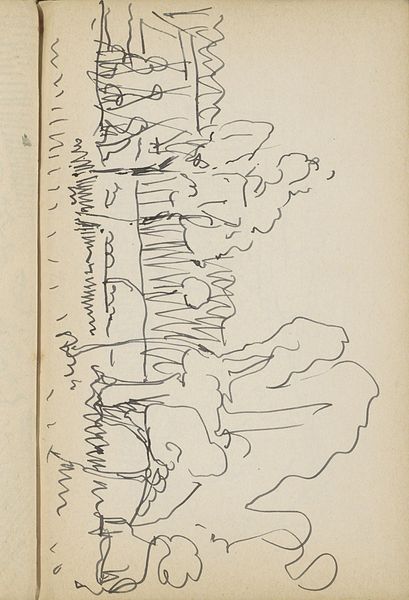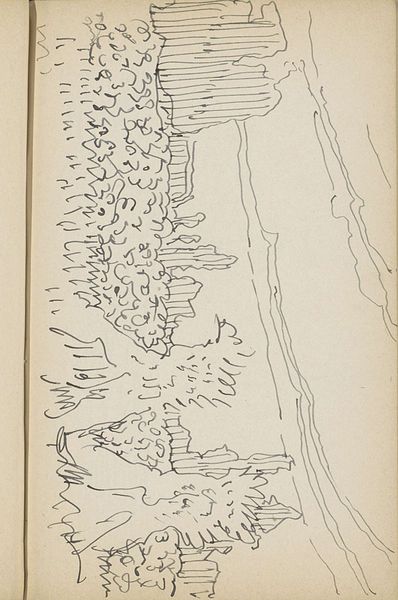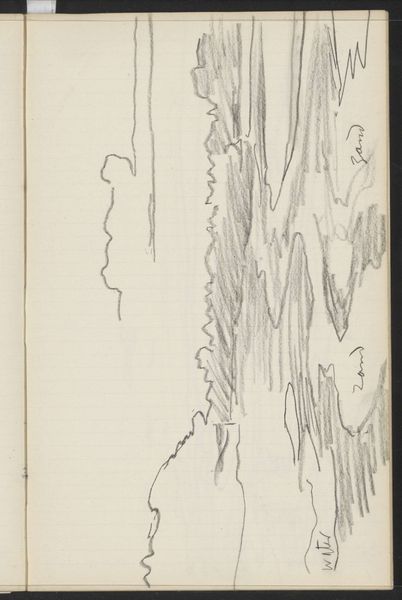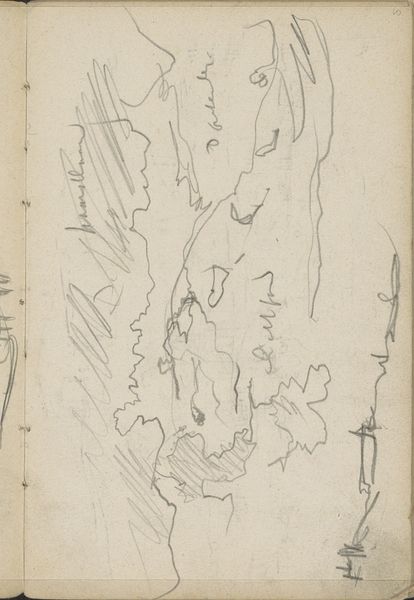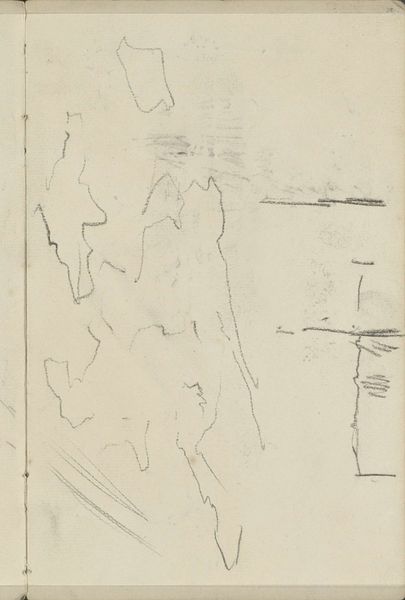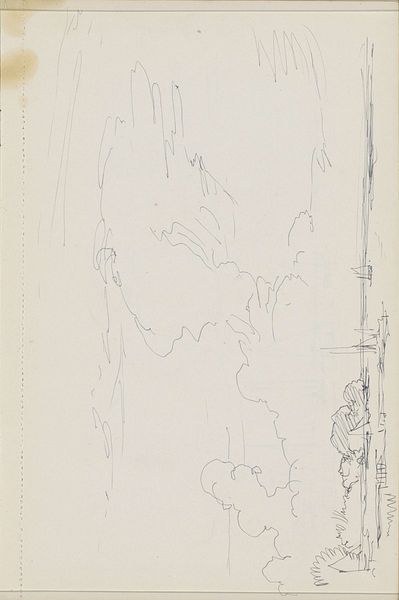
drawing, ink, pen
#
portrait
#
drawing
#
pen sketch
#
ink
#
abstraction
#
line
#
pen
Copyright: Rijks Museum: Open Domain
Curator: This is “Two Heads in Profile to the Left,” an ink and pen drawing by Reijer Stolk, created in 1919. Editor: Well, my first impression is of raw energy, even unfinished. The lines are so spare, almost like a quick notation rather than a formal portrait. Curator: Precisely! Considering Stolk's era, we must see this sketch in relation to the rise of expressionism and abstraction. The economic hardships of the early 20th century created both demand and availability of inexpensive materials and paper became radically available at a lower cost; these cheaper materials facilitated the move away from more time-consuming artistic techniques of traditional painting and a proliferation of rapid pen and ink work across many artist communities. Editor: Yes, I see that. The focus shifts from meticulous rendering to the essence of form and emotion. The density of lines above, perhaps suggesting hair or head covering, is especially striking in contrast to the lighter touch used for the faces. What I find fascinating is how he captures just enough to suggest character without defining it. Curator: And consider how the material process itself impacts that expression. The choice of ink allows for immediacy, the stark black lines stand as a record of the artist’s gestures and intentions in response to the new material possibilities. He also uses a distinctive line-weight technique, there's clear intent behind each stroke that serves not just aesthetic function, but reveals larger questions around labor itself within visual culture during the time of high artistic development alongside radicalization regarding laborers’ rights globally, especially concerning production materials used in artistic creations Editor: A really sharp point, I never thought to consider it like that. This really captures how the medium serves a dual role here, both defining form, reflecting emotion. It's almost as though Stolk challenges the tradition that insists artistry must entail the extensive expenditure labor and money. This approach offers commentary how accessible both representation expression can—and arguably *should*—be. Curator: Precisely. The simplicity itself makes a statement. In the Rijksmuseum's context, where we house masterpieces representing eras of immense wealth and patronage, its understated approach feels like a deliberate counterpoint, don’t you think? Editor: Absolutely! Considering those contrasts forces you to look differently—not just what's represented, but how, and why. It underscores how our understanding of an artwork's real essence lies in connecting its style with socioeconomic conditions surrounding artistic productions like it—such connections add depths for consideration while encouraging viewers discover different meanings by looking closer. Curator: Well put. "Two Heads in Profile" speaks volumes through its simple composition. It reminds us how resourcefulness could push both creativity boundaries in terms stylistic representation coupled critical engagement material culture! Editor: It truly is that perfect harmony; formal execution alongside socio-cultural discourse making for compelling lasting encounter .
Comments
No comments
Be the first to comment and join the conversation on the ultimate creative platform.
